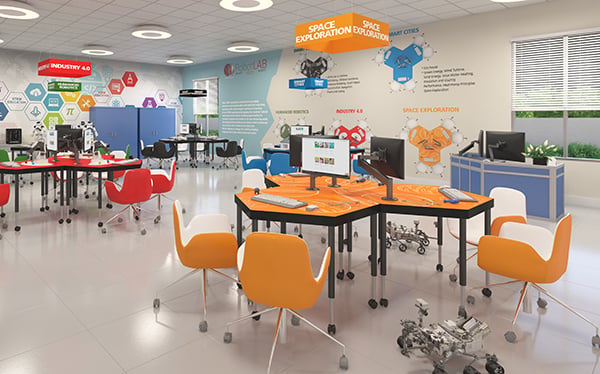Edtech allows for one learner or five million to learn, anywhere on earth, and to take the same classes as each other.  Photo by Franck V. on Unsplash
Photo by Franck V. on Unsplash
Edtech, or “educational tech,” is the utilization of apps and tech devices for the purpose of teaching and learning. Edtech can happen inside or outside of classrooms, at any time, and in any place. Most modern edtech involves the use of a wireless internet connection and an electronic device such as a smartphone, tablet, or laptop, or desktop computer.
Edtech allows for one learner or five million to learn, anywhere on earth, and to take the same classes as each other. However, asynchronous learning is also a part of edtech and allows learners to pace themselves while learning new information. Edtech includes most domains of the educational process. Its fundamental principles encompass the creation of collaborative learning environments in which peers help to coach, tutor, explain, and inspire one another.
Another basic is linear learning, which allows learners to move from beginner level knowledge to intermediate and then advanced learning of subject content. These features can be used to augment in-person teaching with an educator, professor, or another type of teacher. The learning environments in edtech can be one dimensional or encompass multiple learners at the same or different places throughout a section of content.
Edtech also puts into practice research-based teaching principles. These sides of education encompass cognitivism, which utilizes tech to challenge the thoughts of learners; constructivism, which allows educators to use tech to make sure that a learner’s information, work, and assignments are properly leveled and encompass problem-based learning; and social constructivism, which is the use of tech that allows learners to delve into real-world scenarios and test their problem-solving skills, teamwork, communication, and collaborating abilities.
All of these apps and devices come together to further the teaching and learning process. For instance, a learner with advanced mathematics skills who attends a rural high school without enough learners to offer an in-person calculus class could attend their classes through online learning. An interactive discussion forum would allow the learner to ask the educator questions. The class’s LMS would allow the learner to take quizzes and exams and to turn in homework. The management system would allow the outside educator as well as the educators at the learner’s home school to see progress and to give instant feedback and assessment of the learner’s progress.
Edtech is not an innovation. For thousands of years, educators have been devising ways to get their learners to understand ideas through other means than just words. Only the name “edtech” is new. In 2020, we are still dreaming of new ways to apply technology to the teaching and learning process, and I am sure we will achieve our goals in due time.
Discover more EdTech Resources with RobotLAB!

Discover the right tools and resources for your classroom!
